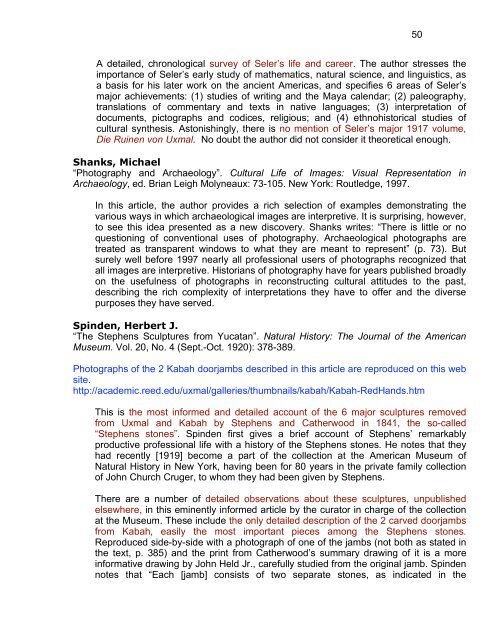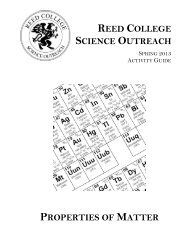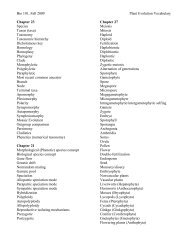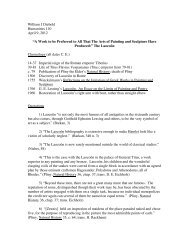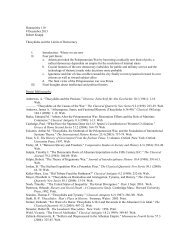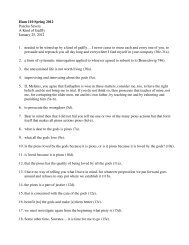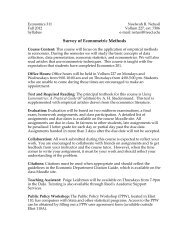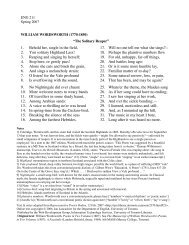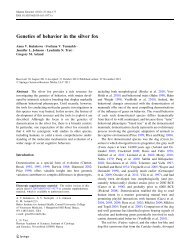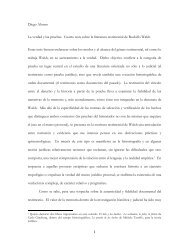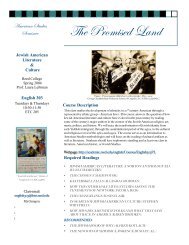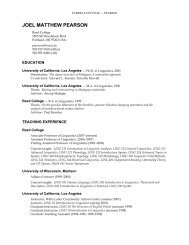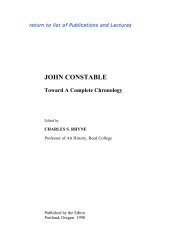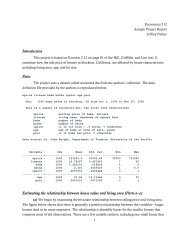Graphic and Photographic Documentation - Reed College
Graphic and Photographic Documentation - Reed College
Graphic and Photographic Documentation - Reed College
You also want an ePaper? Increase the reach of your titles
YUMPU automatically turns print PDFs into web optimized ePapers that Google loves.
A detailed, chronological survey of Seler’s life <strong>and</strong> career. The author stresses the<br />
importance of Seler’s early study of mathematics, natural science, <strong>and</strong> linguistics, as<br />
a basis for his later work on the ancient Americas, <strong>and</strong> specifies 6 areas of Seler’s<br />
major achievements: (1) studies of writing <strong>and</strong> the Maya calendar; (2) paleography,<br />
translations of commentary <strong>and</strong> texts in native languages; (3) interpretation of<br />
documents, pictographs <strong>and</strong> codices, religious; <strong>and</strong> (4) ethnohistorical studies of<br />
cultural synthesis. Astonishingly, there is no mention of Seler’s major 1917 volume,<br />
Die Ruinen von Uxmal. No doubt the author did not consider it theoretical enough.<br />
Shanks, Michael<br />
“Photography <strong>and</strong> Archaeology”. Cultural Life of Images: Visual Representation in<br />
Archaeology, ed. Brian Leigh Molyneaux: 73-105. New York: Routledge, 1997.<br />
In this article, the author provides a rich selection of examples demonstrating the<br />
various ways in which archaeological images are interpretive. It is surprising, however,<br />
to see this idea presented as a new discovery. Shanks writes: “There is little or no<br />
questioning of conventional uses of photography. Archaeological photographs are<br />
treated as transparent windows to what they are meant to represent” (p. 73). But<br />
surely well before 1997 nearly all professional users of photographs recognized that<br />
all images are interpretive. Historians of photography have for years published broadly<br />
on the usefulness of photographs in reconstructing cultural attitudes to the past,<br />
describing the rich complexity of interpretations they have to offer <strong>and</strong> the diverse<br />
purposes they have served.<br />
Spinden, Herbert J.<br />
“The Stephens Sculptures from Yucatan”. Natural History: The Journal of the American<br />
Museum. Vol. 20, No. 4 (Sept.-Oct. 1920): 378-389.<br />
Photographs of the 2 Kabah doorjambs described in this article are reproduced on this web<br />
site.<br />
http://academic.reed.edu/uxmal/galleries/thumbnails/kabah/Kabah-RedH<strong>and</strong>s.htm<br />
This is the most informed <strong>and</strong> detailed account of the 6 major sculptures removed<br />
from Uxmal <strong>and</strong> Kabah by Stephens <strong>and</strong> Catherwood in 1841, the so-called<br />
“Stephens stones”. Spinden first gives a brief account of Stephens’ remarkably<br />
productive professional life with a history of the Stephens stones. He notes that they<br />
had recently [1919] become a part of the collection at the American Museum of<br />
Natural History in New York, having been for 80 years in the private family collection<br />
of John Church Cruger, to whom they had been given by Stephens.<br />
There are a number of detailed observations about these sculptures, unpublished<br />
elsewhere, in this eminently informed article by the curator in charge of the collection<br />
at the Museum. These include the only detailed description of the 2 carved doorjambs<br />
from Kabah, easily the most important pieces among the Stephens stones.<br />
Reproduced side-by-side with a photograph of one of the jambs (not both as stated in<br />
the text, p. 385) <strong>and</strong> the print from Catherwood’s summary drawing of it is a more<br />
informative drawing by John Held Jr., carefully studied from the original jamb. Spinden<br />
notes that “Each [jamb] consists of two separate stones, as indicated in the<br />
50


